Steve Morrisette
 The White Shirt – Virtually every man has at least one. Some men love them, some men hate them and some men are ambivalent about them. Depending on the shirt and the circumstances, one might feel shifting combinations of those attitudes wearing this most ubiquitous of garments.
The White Shirt – Virtually every man has at least one. Some men love them, some men hate them and some men are ambivalent about them. Depending on the shirt and the circumstances, one might feel shifting combinations of those attitudes wearing this most ubiquitous of garments.
But wear them we will, almost without exception, at various times in our lives. Some guys may wear them twenty or more days a month. So why not make the most of it?
What follows is a brief and most incomplete discussion of the elements that combine to make a good white shirt. A shirt that fits well, is comfortable, feels good on the skin and makes a good presentation for the wearer is our quest.
A Few Initial Points
1). Although the focus here is on the white shirt, all the following would apply to any shirt no matter the color or pattern.
2). A short book could be written about what goes into and creates a fine shirt. I’ll be very brief, touching on what I believe are the key elements.
3). There seem to be three basic categories of men when it comes to wearing the white shirt-
Group A: These are the guys that hate "having" to wear a white shirt, a tie or a suit. They stopped reading at the title, or perhaps skipped down to the "Pipe Commissions" section. Their wives buy their clothes.
Group B: These are the men that wish to look well, probably make an effort to buy nicer garments, have some or a lot of curiosity and knowledge about good men’s clothes, but don’t have the budget or the inclination to spend big bucks on a shirt. Just know that bargains can be had fellows.
Group C: The insane. I love these guys. These are the men obsessed with the highest quality, hand stitched and fitted masterpiece garments from the world’s finest tailors. To them cashmere is crack cocaine and Sea Isle cottons are their daily bread. Thank goodness for these fellows that are willing and eager to fork out $500 to $1000 for a single perfect shirt. They make it possible for those Olympian tailors to push men’s fashion and tailoring to ever greater heights. As a result, the styles, techniques and innovations of these elite masters eventually filter down to the garments the rest of us can afford to wear.
Please Note – Most of the illustrations are of blue shirts to facilitate viewing on digital screens. The colors are inconsequential to the discussion.
A Frame For Your Face
That is what your collar is. It is the most prominent part of a shirt’s structure and nearly always visible.
How It’s Made
There are two basic methods of collar construction: fused and non-fused. Fused collars are found on nearly all shirts made today, even many very pricey and well made shirts from renown shirtmakers.
Collars have an inner lining for shape and structure. Fused collars have this lining glued with a heating process. The advantage of a fused collar is that it will hold a much more precise shape and height. This is particularly good on a shirt for very formal dress. The disadvantage is that over time and through many washings the fused lining will "delaminate" and look pretty sad.
Non- fused collars have a "floating" inner lining that is freer to move about. The very best shirts use these most often. The advantage here is a softer, more comfortable collar against the neck and they pass air through, making them cooler to wear – especially in hot weather.
A well made collar, properly attached, will have the points sit equidistant from the center.
Which Collar?
There are at least a dozen or more collar styles, so to keep things basic and brief I offer the following illustration that shows several common styles and which best fits basic face types.
Keep in mind that these are ballpark references and the knot of your necktie needs to work in concert with the collar and your face.

Fabric and Stitching
The topic of cloth and shirt fabrics is a deep rabbit hole.
If you want a good quality shirt stick to all natural fabrics. For the white shirt this will either be Egyptian cotton or Sea Isles cottons or a blend of cotton and linen. One aspect of the aforementioned rabbit warren is the subject of Super numbers. These are meant to indicate the fineness of the yarn in the fabric. The higher the number, the finer the yarn and the lighter and softer the cloth. Unfortunately, like many numbers these days, they can lie.
Generally speaking they tend to help indicate the fineness of the fabric, but there is no substitute for using your touch to judge the feel of the cloth.
To make things simple here I’ll say to look for two-ply fabrics with Super numbers in the 60-80 range. Such fabric tends to hold a better shape and wrinkle less than very high Super numbers.
Ultimately, experience and your skin will tell you what works bets for you.
What is pretty solid is that finer, plainer weaves work best for formal applications, the more formal the occasion the finer the weave and vice-versa.
Iron or Non-Iron?
Iron and non-iron fabrics are available with the best shirting always being the iron variety. Non-iron fabric tends to look unnaturally shiny and the chemical process weakens the yarn and shortens the life of the garment.
Stitching
This is where the real differences in quality appear.
There are two types of stitching: single and double needle. Without going into the mechanics of each let me state that, although it seems illogical, single needle tailoring is the stronger of the two and is always used everywhere on the finest shirts. Some notable labels may employ double needle on side seams, but the best shirts are all single needle stitching.
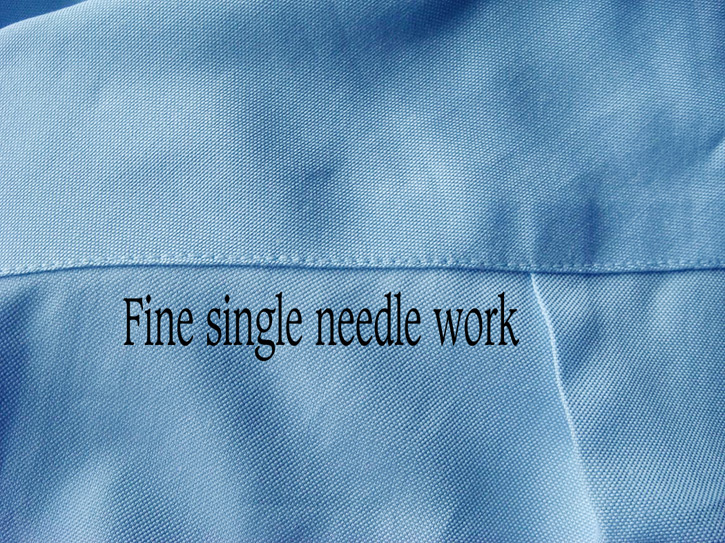
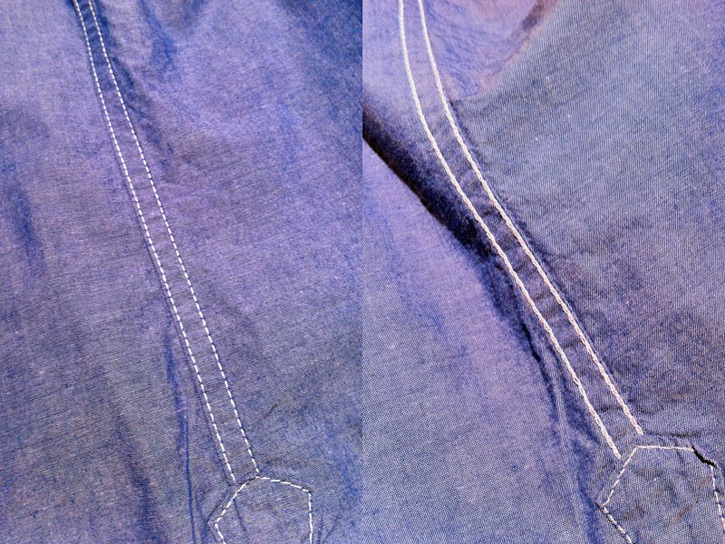
Double Needle Stiching
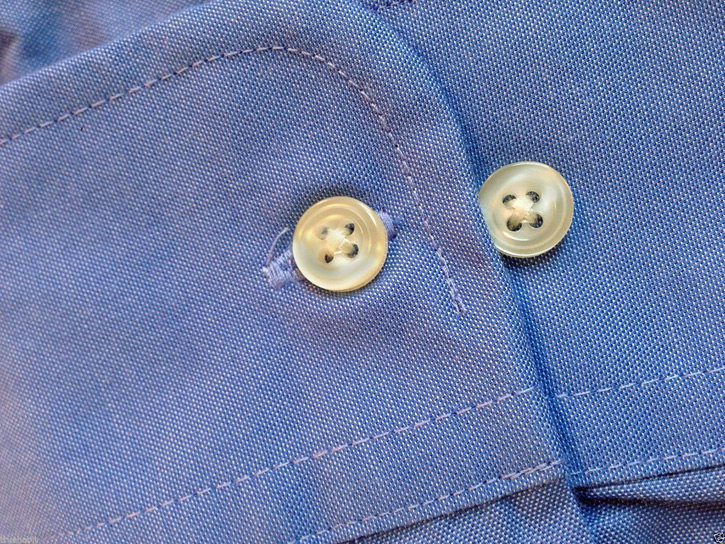
Although this famous label shirt retails for $50 or more, you can look closely and see the inferior workmanship.
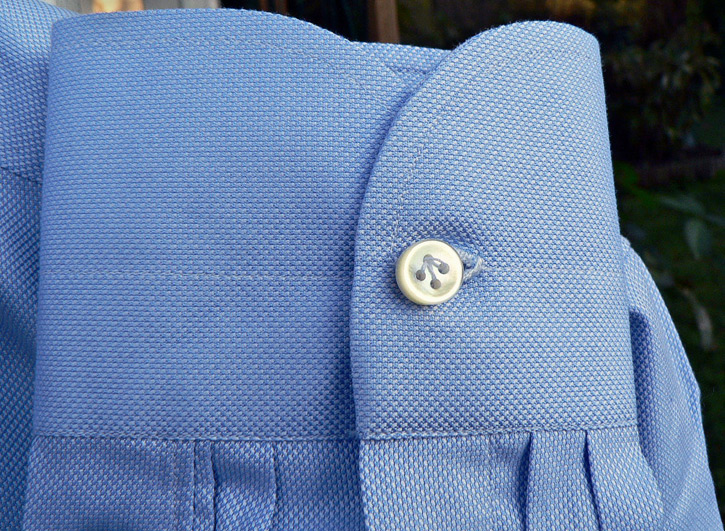
Note the precise, clean work and fabulous button and button hole work on this Luigi Borrelli shirt.
Buttons and Button Holes
These two elements alone can tell me if I am looking at a fine shirt. The buttons will be high quality mother of pearl, not plastic and the button holes will have been cut first and then precisely and beautifully stitched.
If you are rolling your eyes at this point, I understand. It is however a sure indication of a garment that is well made when the buttons and button holes show high quality. You may often find plastic buttons and cut after stitching button holes on some very expensive shirts, but you will never find a poorer quality shirt with mother of pearl buttons and well stitched button holes. They do not exist.

Shirt by Kiton
All the Rest
As I said at the outset, there is a lot of ground to cover on this subject and I’ve only offered a glimpse of a few basics.
Sleeves offset at the armscye, French seams, split yokes, sleeve pleats, and gusseted hems are but a few other elements that go into a really fine shirt.
What has been offered should assist those that wish to try and make the most of that white shirt. They really are special. Wear them with jeans and sneakers or the finest Attolini suit- they go with everything and that is pretty cool. And if you wear a good one, you will always look great.
Some Shirt Porn
Warning: The following could be dangerous for your bank account, your marriage and your sanity.
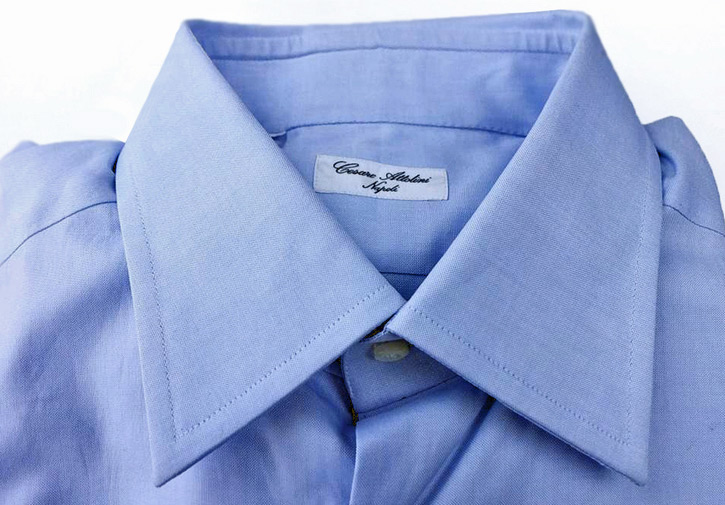
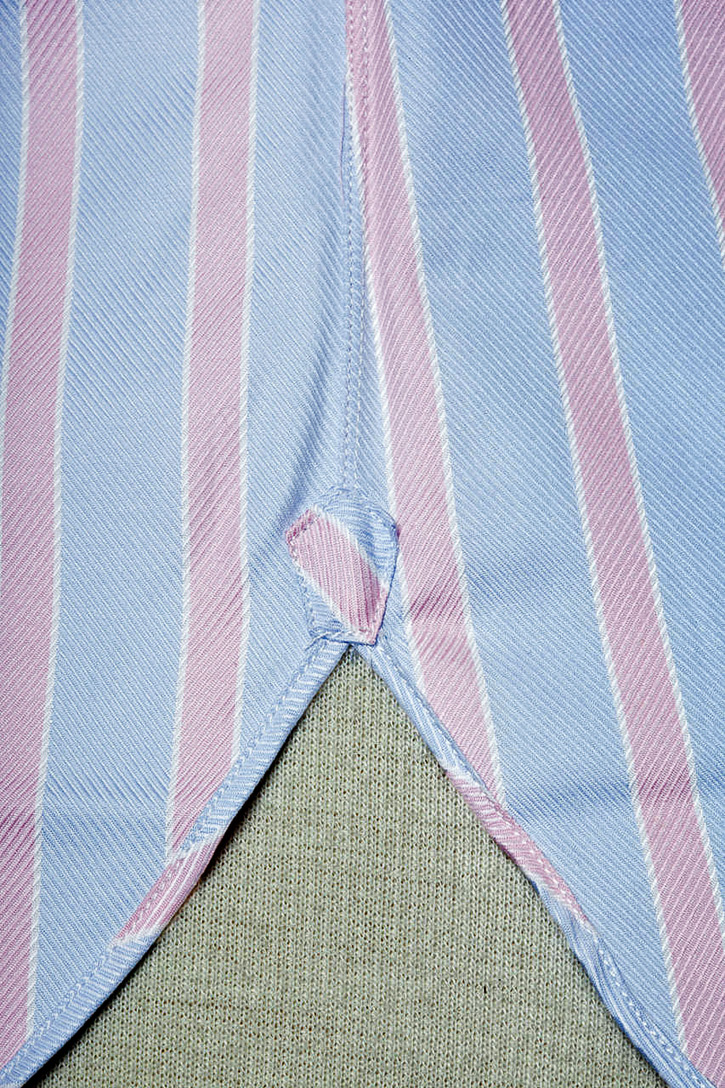
Hem Gussett
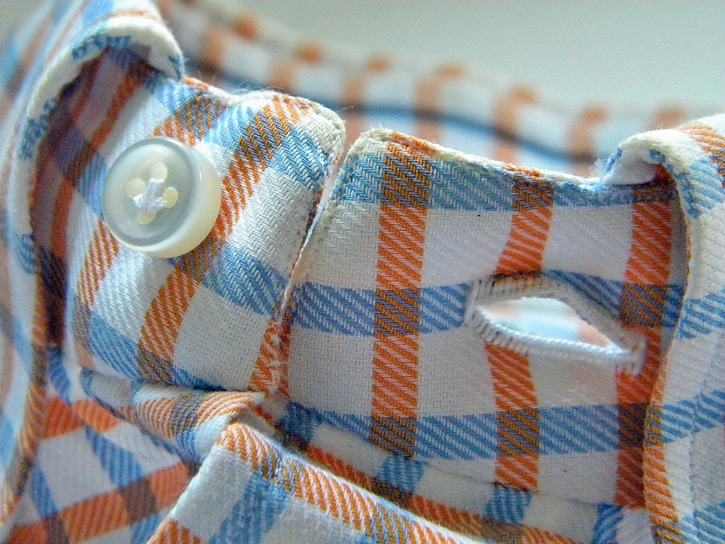
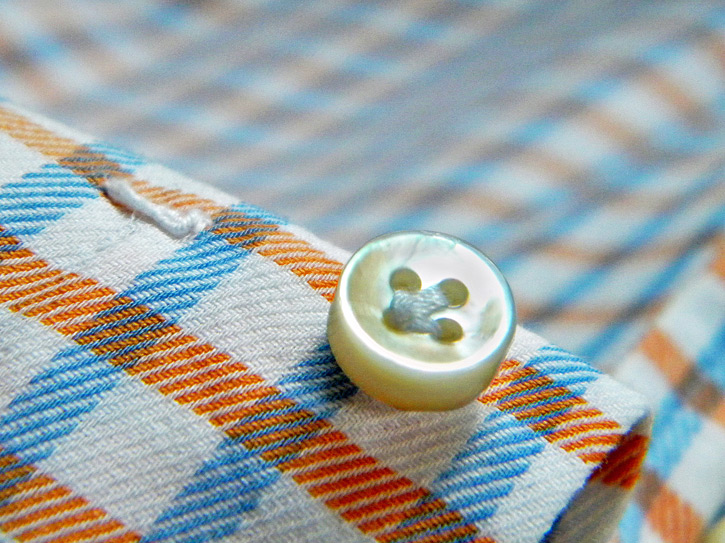
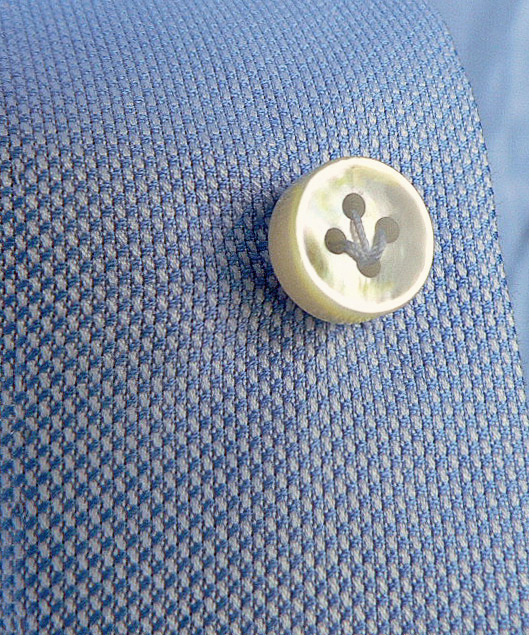
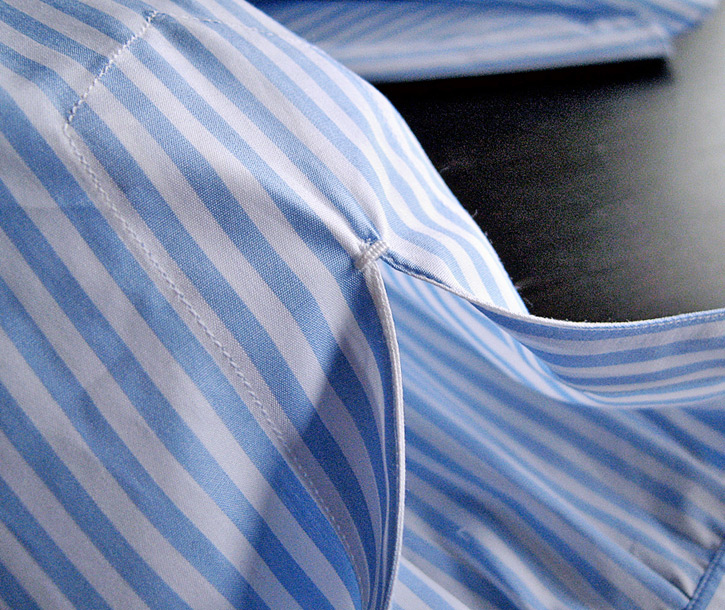
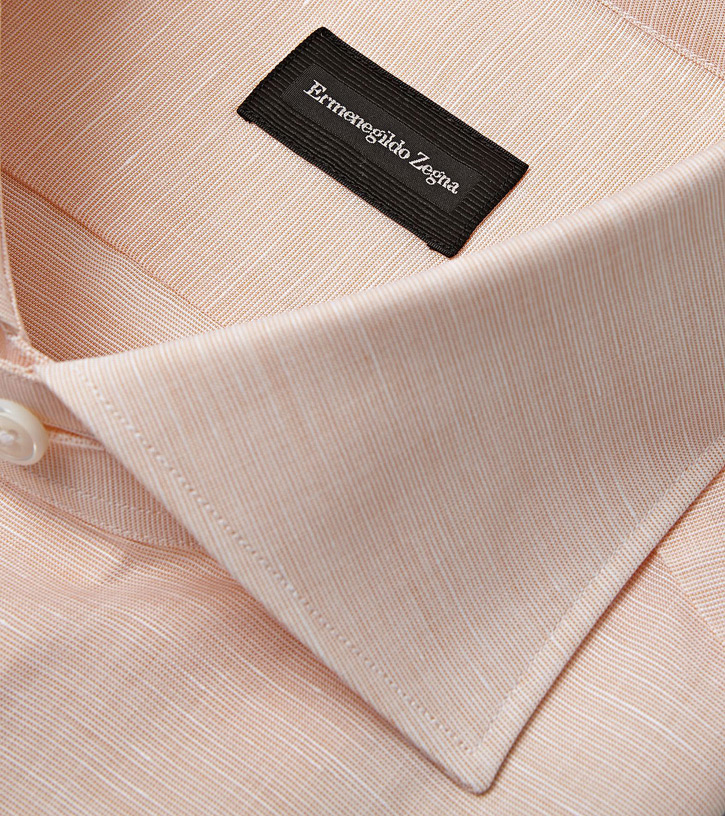
Pipe Commissions
There has been a good deal of discussion online of late regarding the commissioning of a pipe from an artisan pipe maker.
I feel fortunate that I can offer my opinion on the matter here where the good Mr. Godbee allows me broad latitude, for which I am grateful.
Only one time in my years of pipe collecting, which preceded my becoming a pipe maker, did I commission a pipe. It is a wonderful and masterfully executed realization of my much too exacting request done by Austrian Peter Matzhold. Peter is a truly nice fellow and did not utter a word of protest when I presented him with a very detailed pipe plan.
Now, after several years of pipe making and completing more than a few commissions, I know that my request of Peter was pretty unreasonable and way too specific in requirements.
As one example of my cluelessness, I specified the exact angle I wanted from the grain on either side of a very long shank, while keeping birdseye across the front of the bowl. That is rather extreme. Most pipe makers would balk at such an exacting specification.
A couple of years into pipe making I sought out Peter at the Chicago show and apologized for being such a knuckleheaded consumer.
Briar, unlike metal, does not lend itself to precise fabrication that matches a blueprint. If you present engineering plans for a pipe commission, I hope the pipe maker makes this plain.
Do You Really Understand?
Even after a collector seems to grasp the nature of briar vis-à-vis pipe making and commissions, things can go awry.
Remakes
On a simple ( I thought ) commission some time ago, I had a pipe rejected for a very minor aspect and I made a replacement. The replacement was also rejected. Below are the two rejected pipes.
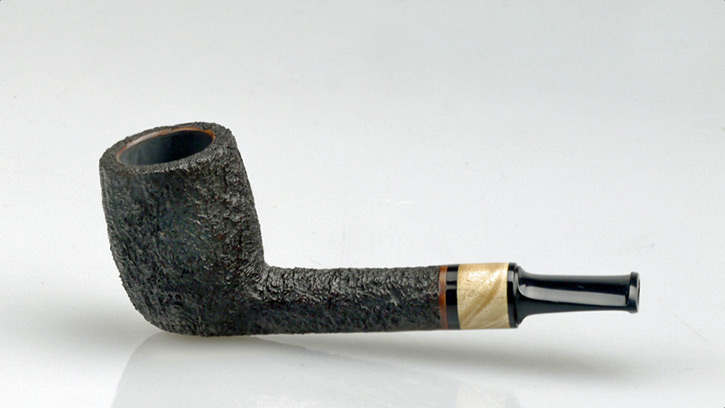

The first pipe was a bit too large, though pretty close to what was discussed via a phone call. The second was exactly right except two grams heavy. Two grams.
I told the collector I could top the bowl or shorten the shank, or a bit of both to reduce the weight to the precise spec he wanted. He rejected this approach because the dimensions were spot on. He made no effort to reimburse me at all for my time and materials.
Folks, when a pipe is remade for you, you buy it. Period. Know that going in. Artisan pipe makers are not manufacturers or wholesale distributors with shelves of similar pipes. Sure, we’re not Michelangelo, but you’re not the Pope either.
"So call Tony!"
Another rather poor practice is requesting a knockoff of a high-end pipe maker’s work – especially a copy of a unique or signature shape. You are basically asking an artisan to copy some very expensive pipe for much less money. I mean, no one ever goes to pipe maker X and asks for a Bo Nordh Ramses and then expects to pay ten grand for it.
Back when I was playing drums for a living I was in L.A. when a famous record producer asked the drummer on his session to alter his approach to the chart.
After stopping the tape (yes, I’m that old ) several times and becoming increasingly irritated, Mr. Famous Producer said; " I want you to sound like (jazz great) Tony Williams."
The session drummer slapped his sticks down on the snare, stood up and left the drum booth. On his way out, he said over his shoulder; "So call Tony!" This story got around the L.A. recording scene in a heartbeat. These folks are artists. If you want a copy, call Xerox.
The Dream Commission
The cell rings and a collector says," I really like your upside down billiard blowfish I saw on the Uber Pipes web gallery. Could you make me something along that line? I really like your approach to pipes, so feel free to make changes if you are so inspired".
This is the ideal commission request. He is asking you for a pipe because he appreciates your aesthetic. You both agree on a budget range for the pipe, with the understanding that should the pipe change markedly from the general guidelines, the collector will be informed and photos provided as necessary and he is no longer under any obligation to purchase. Obviously the pipe maker wishes to make the collector happy, so he would not want to abuse the trust that has been placed in him.
This way each party is respected, happy and appreciated by the other.
A solid foundation for a great relationship is now laid and all is well with the world. We pipe makers absolutely do appreciate the collectors. It is they that sustain us and make the next pipe possible.
Making something by your own hands that ultimately puts a smile on someone’s face is a huge reward. We just need to eat and buy briar in the process of endeavoring to make you happy.
Cheers,
Steve Morrisette
the Gentleman Smoker
the Gentleman Smoker’s tip:
Give yourself a white shirt mini seminar. When next you find yourself at a mall or anywhere you may conveniently find inexpensive white shirts in close proximity to a purveyor of really high-end white shirts, have a close look at each and compare the buttons, button holes and stitching, fabric and collar construction. You might begin to see some serious differences in quality.
|
Steve Morrisette is an artisan pipe maker, relentlessly snappy dresser, and self-confessed Virginia gentleman. He makes artisan pipes for discerning collectors, and scours the internet and shops of all types seeking information and fine garments, hats, watches, shoes, and jewelry – anything related to the gentleman’s lifestyle. Steve also spent several decades as a working drummer and photographer/photojournalist. You can find his pipes at www.smpipes.com, and catch his style photos and latest pipes on Facebook and Instagram. |


















When I saw the post that you were going to write about how to make a commission, I admit that I came over to this, hands on hips, to see what exactly was going to be wrong with your article, but shazam, you hit it dead on. That is all exactly right for any craft any medium any article that you are going to have fabricated. I have people who will bring me pictures of other jewelry artist’s work and ask me to make it cheaper for them all the time, and this is a fast way to get on my grumpy side. And, asking me to make things according to their blueprints is an odd one too. I usually just suggest they take one of my classes to make it themself, …in a very nice way of course :o) Because they seem to be the designer with a plan, and it is usually in a style that I don’t work, because they want their own style. It is much harder to take directions, and this makes doing commissions much harder than just being creative in your own way. I respect you pipe makers in this. It is a lot like cutting opals. The briar doesn’t always lend itself to what we want. …like a box of chocolates, you don’t know what our gonna get, so to speak, ha ha. Great article. I have to go check my shirts out a little closer now. Thanks!
Well done. At first it seemed hard to believe that a primer on shirts would be needed. If you’re at all long in the tooth and worked in the corporate world, shirts, ties and suits were the uniform of the day but today’s corporate casual has changed all that. My last few years on the job I sometimes wasn’t sure if I was at a business meeting or a beach party. I for one could never quite get used to it. I chuckled a bit while reading your article, thinking to myself there are probably a lot of people out there today who have no idea of what makes a good shirt or how to pick one that looks good on you. But now they know!
I’ll admit, I kind of rolled my eyes when it came to the shirts. However, I read it anyways. As someone in a new position that requires the “white shirt” more than not, I found this article really helpful! Especially on what makes for a quality shirt and what to look for. I’ll have to try out the collar tips as well. I’m really glad that I’ve been approaching commissions the right way. I hear horror stories from friends about blue-prints presented to them for pipes. Seems silly to me to limit an artist. I usually pick my makers by their aesthetic and then if I can budget something in their range. Like Morrisette pipes. Love the look. Will own one some day. It’ll just take me a little more saving! Great article Steve!
Thank you for this. As you indicate, attention to detail is the hallmark of a quality product. While not everyone can afford high-end designer garments (or vehicles, or pipes, or jewellery), knowing how to see the details helps one make wiser choices. Thanks for the education.
Very nice, informative article on dress shirts.
There are people out there who will abuse a commission request as if their satisfaction and well-being should be everyone’s goal in life. I have see a carver or two take advantage of the situation also.
Great article…as always. Thank you.